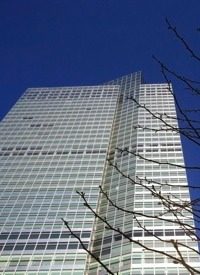
The Securities and Exchange Commission filed a lawsuit April 16 against New York-based investment bank Goldman Sachs. The SEC alleges that Goldman committed systematic fraud in marketing a package to investors without revealing a major conflict of interest.
The SEC claims that Goldman, in its promotional materials for an investment package known as a synthetic collateralized debt obligation (CDO), whose formal name was Abacus 2007-AC1, failed to note that a huge hedge fund, Paulson and Co., was responsible for picking investment entries for the package and that, more importantly, Paulson and Co. was shorting (i.e., betting against) some of the very investments it was recommending for Abacus.
The SEC lawsuit sent shock waves through the market on the 16th, causing Goldman shares to plummet 13 percent. Investors worried that Goldman would not be the only megabank targeted by the feds for investor fraud as the finger-pointing over the great market meltdown of fall 2008 continues.
Goldman Sachs, be it noted, has long been an incubator for major players in the Washington-Wall Street connection, including Robert Rubin and Henry Paulson, Treasury Secretaries under presidents Bill Clinton and George W. Bush, respectively. Moreover, Goldman was one of the recipients of TARP funds (roughly $10 billion, which it has since paid back with interest). It is therefore ironic that the Federal Government is now turning on one of its kept financials, making an example of an admittedly deserving Wall Street behemoth while ignoring the systemic problems that have allowed the likes of Goldman Sachs to reap vast profits from its inside connections and access to taxpayer-backed government monies.
Marc Faber, a prominent Hong Kong-based fund manager, believes that the Goldman investigation is a smokescreen. “The target now is Goldman Sachs. You distract the masses with a villain,” he told the Asian Real Estate Association Forum in Singapore recently. Other banks in the Far East, including large Asian rivals like the state-owned Agricultural Bank of China, are taking advantage of Goldman’s sudden vulnerability by trying to wrest business in the region from the 141-year-old investment bank.
The larger truth of the matter is that all major investment and commercial banks operate largely on a fraudulent basis, for several reasons. Many of them, Goldman Sachs included, are among the so-called “primary dealers,” ultra-privileged private institutions with which central banks like the Federal Reserve conduct their open-market operations. Because open-market operations — whereby the Fed controls the money supply by purchasing and selling government securities — are the most important tool which modern central banks use to manipulate the economy and create credit bubbles, Goldman Sachs and their ilk occupy government-sanctioned positions at the top of the financial food chain, able to anticipate and benefit from Federal Reserve policies long before the rest of us are allowed to know what Bernanke and co. are up to.
Moreover, such banking and financial institutions have (with a few exceptions) demonstrated servile willingness to accept taxpayer-funded bailout monies when the profits head south, because they are no longer required to accept the risks of failure alongside the rewards of profits. This grievous state of affairs, incidentally, dates all the way back to the Panic of 1907, when — for the last time in American history – big banks and investment houses had to raise their own capital to rescue their bottom lines. So traumatic an experience was this for the privileged and the well-heeled that the Federal Reserve System, with its connections to Big Finance and Big Banking, was created only a few years later.
The likely outcome of the Goldman episode will be a slap on the wrist for public consumption, followed by a return to business as usual among plutocrats on Wall Street and on Capitol Hill.
Photo of Goldman Sachs HQ: AP Images



